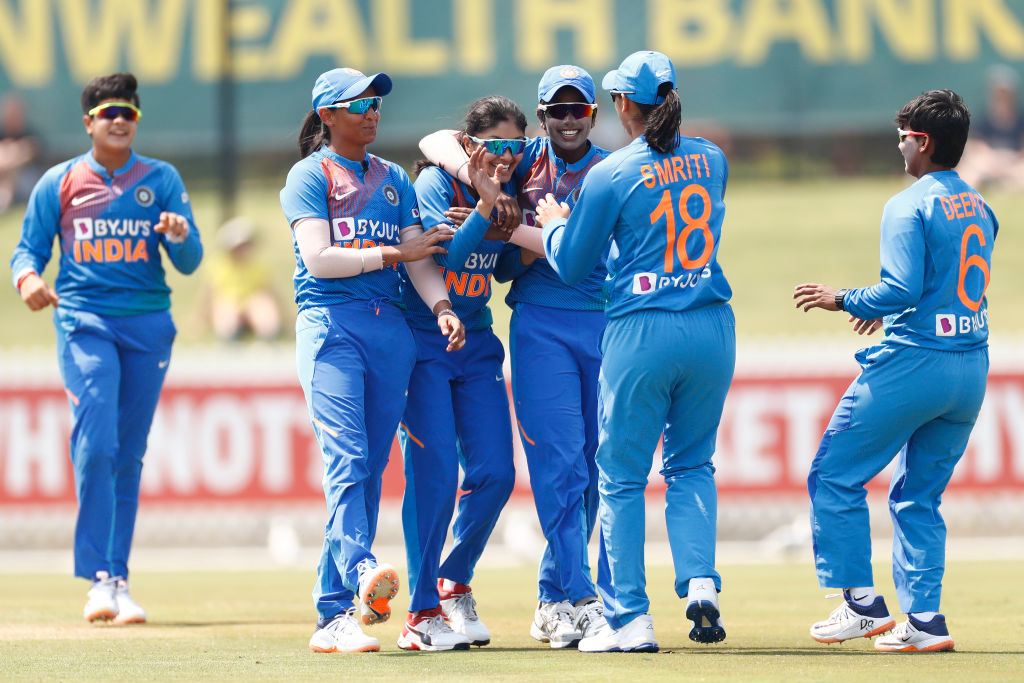India out to do away with mercurial tag as another World Cup beckons
First it was Tushar Arothe and then Ramesh Pawar - the factions in the Indian women’s cricket team were prominent when India were crashed out of the 2018 Women’s T20 World Cup. However, since WV Raman’s appointment, there is a sense of contentment - one that gives hope.

When it comes to method, very few come close to following it as rigorously as Raman. Not only did the Tamil Nadu giant, who represented India in 11 Tests and 27 ODIs in the late 1980s and 90s, brought a sense of his method wherever he worked but also set up a new pathway for U-19 cricketers during his time at the National Cricket Academy. His appointment was perceived as the best thing to have happened to the Indian women’s team but a year on, things have remained pretty static.
It might have nothing to do with Raman’s method - which has been a proven one in the past - but a coach is as good as the results on the field, the man-management comes later. Since January 2019, the Indian eves have registered 10 wins and as many losses in T20Is, with one issue after another making an appearance on a regular basis. But as the World Cup gets underway on Friday, India would rather perceive it as an opportunity to strike the right note and the monumental step to achieve the lost dream on the back of the momentum they have been able to generate in the last few games - securing 10 wins from 14 games.
India got some much-needed game-time in Australia, with the tri-series against two of the best sides in the World, and it was kind of a cover for the Indian players missing the Women’s Big Bash League thanks to the T20 series against Windies. South Africa had eight players in the WBBL, and England and New Zealand had seven of their own, making it a fine battleground for bigger and grander events and that would matter for a lot as both Australia and New Zealand are a part of the Group of Death with India. For India, toppling them with the minimum amount of experience in those conditions will be a task easier said than done.
For context, India had won eight out of their last nine T20Is before Raman took over the role of coaching the side from Ramesh Pawar, with the only loss coming in the semi-final of the 2018 World Cup in the Windies. Raman took time to settle down in his job and even though he suffered six straight losses, he figured out the combination going forward. Teenagers - Shafali Verma was given a bigger role alongside 16-year old Richa Ghosh, who opened in the tri-series final. She is all set to make her World Cup debut at the Sydney Showground Stadium tomorrow. The addition of two teenagers is a sign of how far Indian women’s cricket team has come and the promise that it holds for the upcoming edition of the World.
As far as the combinations go, however, things fall flat on the face. Of course, the squad has some impressive performers, the likes of Varma, Ghosh and Jemimah Rodrigues not only bring the exuberance of youth but also can call themselves match-winners in their own right. But majorly, it was down to the performance of Smriti Mandhana, the highest run-scorer in Women’s T20I cricket since 2019, that the cracks have been peppered over. Should the bubble burst at the most inopportune time, then Harmanpreet Kaur will have no option than leading a side playing catch up.
There is another problem for the Indian team when it comes to picking their bowling attack. Rajeshwari Gayakwad’s performance in the Challenger Trophy in Cuttack, where she topped the wicket-taking charts and did an encore of the performance in the tri-series, forced her way back into the side, where she will partner with Poonam Yadav, Deepti Sharma, and Radha Yadav. There have been discussions about the team going for a four-pronged spin attack in Australia - a tactic that is never a viable one in Australian conditions. Add to Harleen Deol and Harmanpreet Kaur’s part-time spin bowling, India have a problem of plenty, but at the cost of drying up the pace department, with Shikha Pandey being the only front-line pacer. Pooja Vastrakar and Arundhati Reddy can bowl medium-pace but their effectiveness is a discussion for another day.
For India to do well, the success of Mandhana is a must but one can do only so much. The middle-order continues to disappoint and that was exposed in the tri-series final when India failed to chase down 38 off 27 balls. Harmanpreet, the holder of probably the most outrageous innings ever played in the women’s cricket history, is a hit one game and miss in the other, something that is as big a concern as the pace bowling woes. If it is not a careful invasion, then the casualty of the damage would be more visible, given the fact that India have no leeway with Australia and New Zealand in the same group. Raman knows a thing or two about it and planning it properly will be the eventual shot-caller.

Comments
Sign up or log in to your account to leave comments and reactions
0 Comments